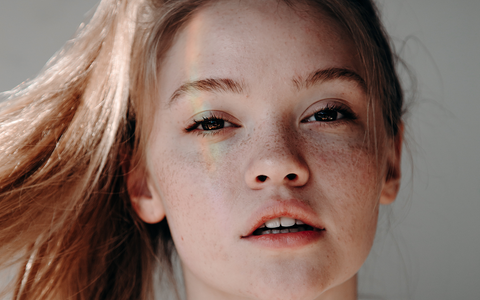Time and time again we have heard of skin types as fitting into 5 categories: Oily, Dry, Combination, Sensitive and Normal. It’s what skincare brands talk about on their packaging & marketing and it’s also what has been traditionally taught in the beauty curriculum. It is easy enough to try guess what we fall in to and therefore choose our skin care accordingly; however, we believe really understanding your skin type is the first step in overcoming your skin concerns for good.
So, what is a skin type. Put blankly it is something you are born with. This means you cannot change it (unless you undergo some serious medications or hormonal changes). Your skin type may alter slightly as you get older and go through life changes such as puberty but for the most part, you live with what you get.
We believe and continue to teach our customers that there are 3 (not 5) skin types. Think of each of these skin types as having a scale of mild > moderate > severe and you can sit or fluctuate up and down these scales throughout your lifetime (but will ultimately stay in the same skin type category).
1. Lipid Dry: This is a skin that is deficient in essential fatty acids. A healthy skin has a strong supportive barrier. Your barrier is your ‘outer surface layers’. Its essentially what makes you waterproof and provides protection against things entering in through your skin (that don't belong in your body). HOWEVER, in order to have this healthy barrier your skin must contain an abundance of natural fats (essential fatty acids). A Lipid Dry skin lacks these fats and therefore lacks the supportive grounds to age well, protect itself well and function well. This skin type looks and feels dry. There is little to no oil production and it is often prone to irritations, inflammation and eczema.
Note: Always go off what majority of your skin is showing you. Eg: If you have an oily nose but the rest of your face is dry/flakey, then you are still a lipid dry.
2. Lipid Rich: This skin type is the opposite to lipid dry. It is a skin that is RICH in fats (be it good or bad fats). It can present itself as having a shine, enlarged pores and fairly thickened skin. This skin tends to age well and is most common in ethnic races (Mediterranean/asian). It is often misunderstood that oil creates acne but this is simply not true. Poor quality oil production in the skin, diet and hormones create acne, not oil itself (as we already established your skins surface is basically made up of it!). A lipid rich skin is the most uncommon of the 3 types and if your unsure if you fit into this category then a trick is to check behind your ears, back and breast bone. If these areas are also oily then you are a lipid rich skin type.
3. Diffused Red: You probably guessed it, this skin type is prone to redness. It is very common in fair caucasians and can present itself as having rosie cheeks, nose or some tiny vessels scattered across the face. If this is you then you likely go red quite easily after a workout, being in heat or feeling flustered. This skin type will often have a red head gene running through the family and be more prone to skin conditions such as Rosacea (yayyy… not!).
If your reading through these skin types thinking none of them are you, I assure you, you fit into one but most likely just on a very mild scale where your skin is presenting itself quite balanced. You have a nice balance of oil to water in your skin and have little to no concerns or discomforts. Lucky you! Either way, it is still equally important for you to understand how to look after your skin properly in order to not throw off that beautiful balance.
A goal with all of these skin types is to not change it - as we already know you cant change genetics - but it’s to normalise it as best as possible and maintain a healthy harmonised skin by giving it the best possible nutrition inside and out.



